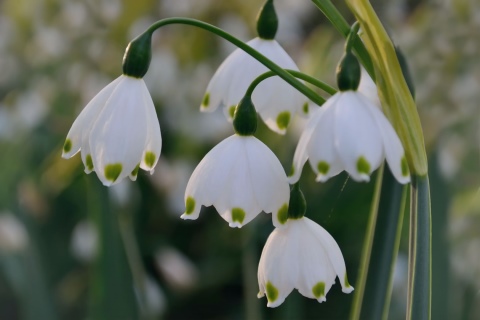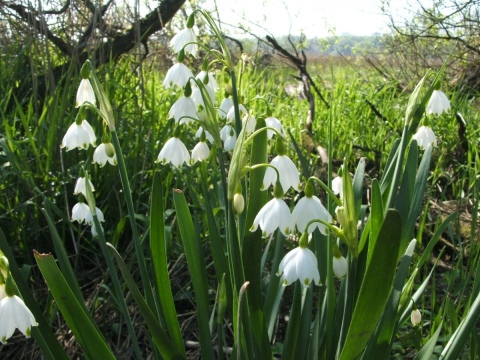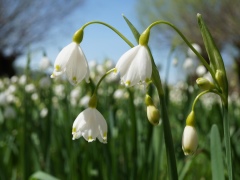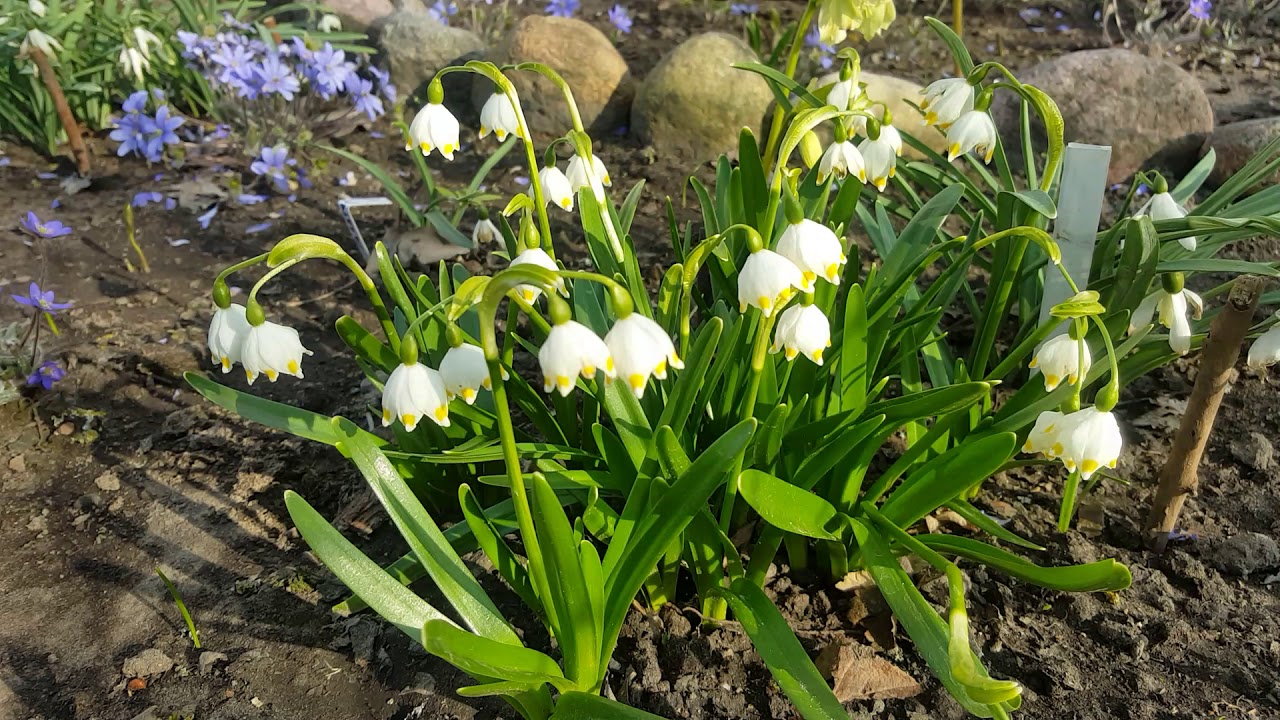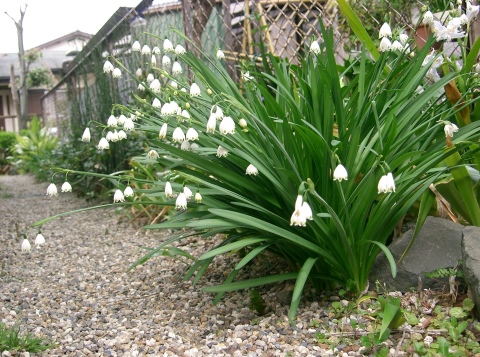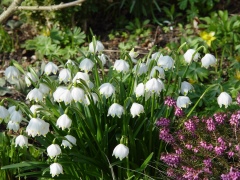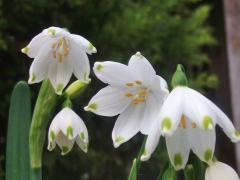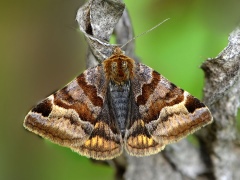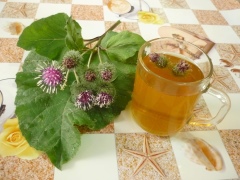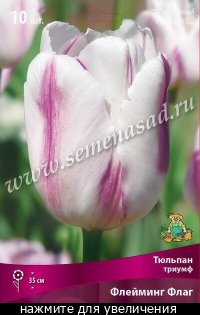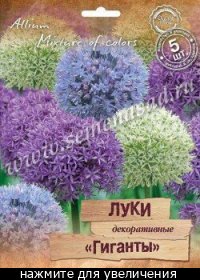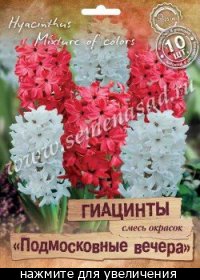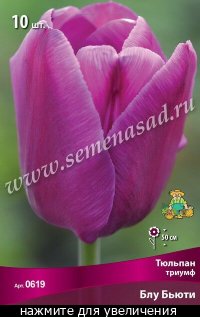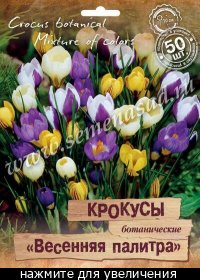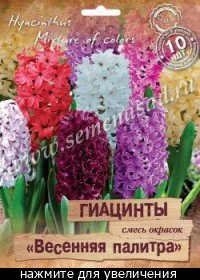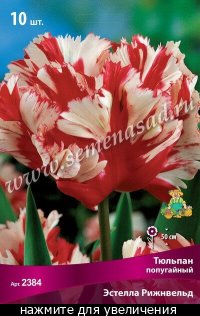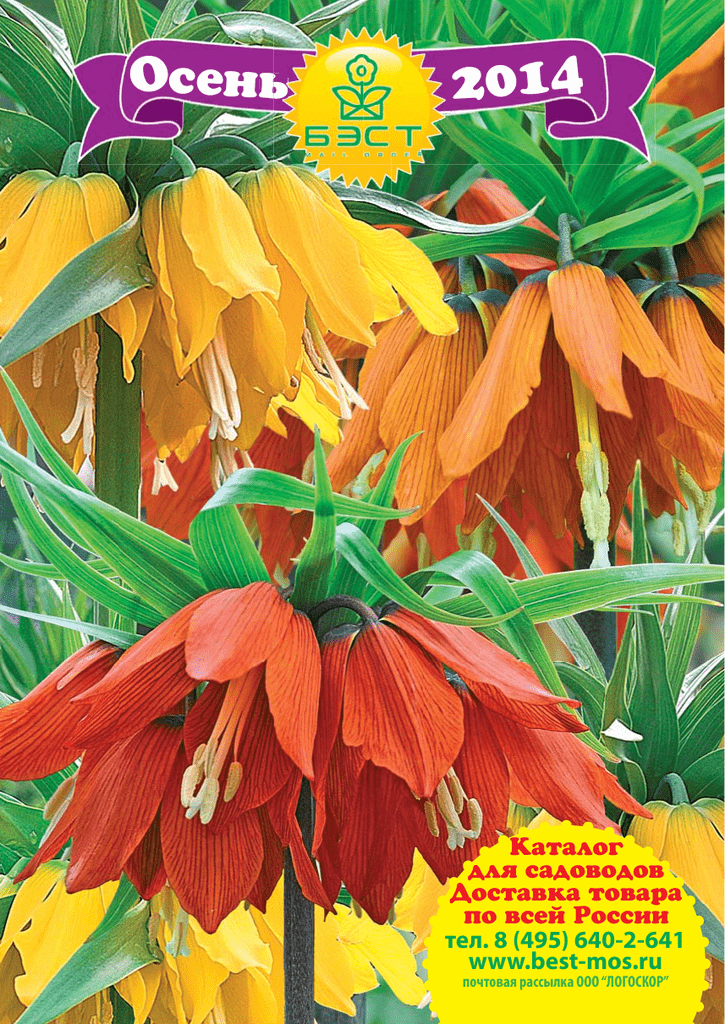White flower diseases
Viruses. Pale yellow light green labels on leaves in the vicinity of an uneven, lumpy surface or their unnatural curling indicate infection with viruses. It is better to destroy the affected plant as soon as possible, before it becomes a source of infection for others. But viruses, as a rule, do not enter the seeds, so that the affected species can be healed simply by reseeding.
Fungal diseases. Brown or black marks on the leaves, fluffy gray patches of plaque that usually appear in warm and damp weather at soil level, and then rise and grow, indicate the appearance of a fungal disease: rust and gray mold. The affected parts should be cut off and burned, and diseased plants should be treated with fungicides as soon as possible according to the instructions.
Chlorosis. Leaf yellowing is usually caused by bulb damage, disease, poor drainage or growing conditions, not a lack of any nutrients in the soil.
White flower care
Transplantation of the white flower is required every 5-6 years. During the active growth of the white flower, liquid inorganic fertilizers are applied. Fertilizers with a high nitrogen content are undesirable. It is better if they contain more potassium and phosphates. A large amount of nitrogen causes excessive leaf formation, which in wet weather can become the basis for fungal diseases. Potassium, on the other hand, contributes to the formation of healthy, well-wintering bulbs, and phosphorus is especially useful for flowering.
During active growth, small-bulbous plants consume a lot of water. Nature usually provides sufficient watering at the right time, but if the winter has little snow or the spring is dry, the florist himself will have to water the white flower. Watering small-bulbous plants is not a very cumbersome task, they are quite resistant to drought and will not die in any case. Only grow up short. After collecting the seeds you can forget about them. In the future, small-bulbous ones do not need care until the end of the season. However, they can sow seeds themselves. This is how naturalization begins.
Any operations with bulbs - transplanting, selling, dividing “nests” (groups of related bulbs) - are performed when the plants are dormant, in July-September. The dug out white flower bulbs are slightly dried, cleaned of old roots and bad scales. Mechanical damage is sprinkled with ash, sick individuals are discarded.
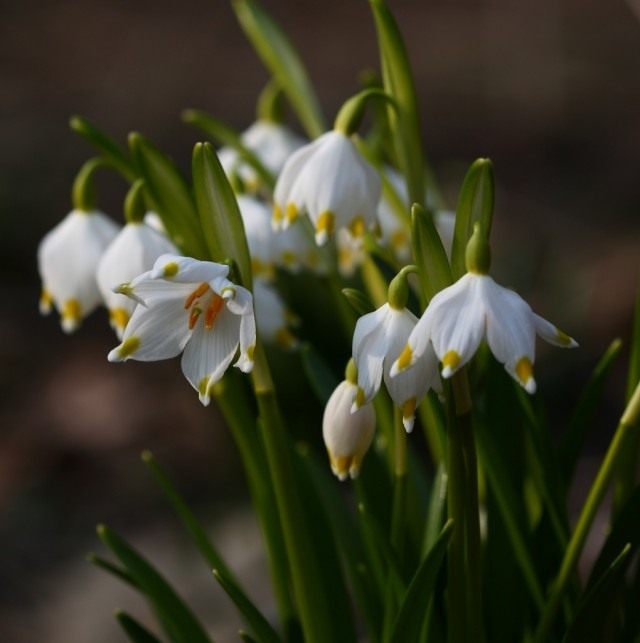 Spring white flower. Hedwig Storch
Spring white flower. Hedwig Storch
Features of growing white flowers
Location: white flowers prefer partial shade.
Soil: humus-rich, well-drained, moist soils near shrubs and reservoirs are suitable for white flowers. When preparing a place for growing small-bulbous for drainage, coarse river sand or gravel is added to the soil. Poor soil is improved by adding rotted manure, but not fresh, leafy soil and sand. If peat is used as an organic additive, then it should also be rotted, preferably with lime, since white flowers do not like acidic soils.
Planting: The best time to buy and plant white flower bulbs is July-September, when the plants are at rest. With a long and warm autumn, the time allowed for planting a white flower is stretched until the beginning of November. In the amateur market, white flowers are often sold in bloom, this is not very good for them: immediately after landing leaves wither, turn yellow, then die off completely. But the white flower bulb, although weakened, remains alive. True, next year such plants bloom weakly or may not bloom at all, but still do not die.
When buying resting white flower bulbs, it is imperative to check their condition. They should be dense and heavy, with intact membranes, without overgrown roots and stems. However, overgrown roots and stems are still permissible, only such a bulb must be urgently planted. Cuts on the bulb are also acceptable, but only on the scales. The bottom should not be damaged, and care must be taken that the wounds are dry and not affected by mold.
Even bulbs with a cut off top (the upper parts of the scales), but an intact bottom and buds, remain viable. You should not buy only broken and crumpled white flower bulbs. Soft areas on the bottom or on the sides, especially with a peeled shell, indicate decay. It is almost impossible to cure rotten bulbs.
White flower bulbs do not tolerate long-term drying. It is better not to keep them in the air for more than a month, and if it is not possible to plant them, then sprinkle them with sawdust, shavings, etc. and put them in a plastic bag with perforations. In this form, they usually go on sale and are stored for 2-3 months. White flower bulbs are planted according to the general rule: in loose soil to a depth equal to two bulbs, in heavy soil - to a depth of one. But in any case, no smaller than 5 cm.
In general, strict adherence to the planting depth for small-bulbous is not necessary. It's just that when they are shallow in the ground, the bulbs become smaller, but they actively form children, and when they are deep, they become larger.
 Summer white flower. Radek Szuban
Summer white flower. Radek Szuban
Growing features
The favorite location of the white flower is partial shade. Plant prefers well-drained, humus-flavored moist soil near reservoirs and shrubs. When preparing a site for growing bulbs, coarse sand or gravel is introduced into the soil for better permeability. If the soil is depleted, its properties can be improved by introducing humus, sand and leafy soil.
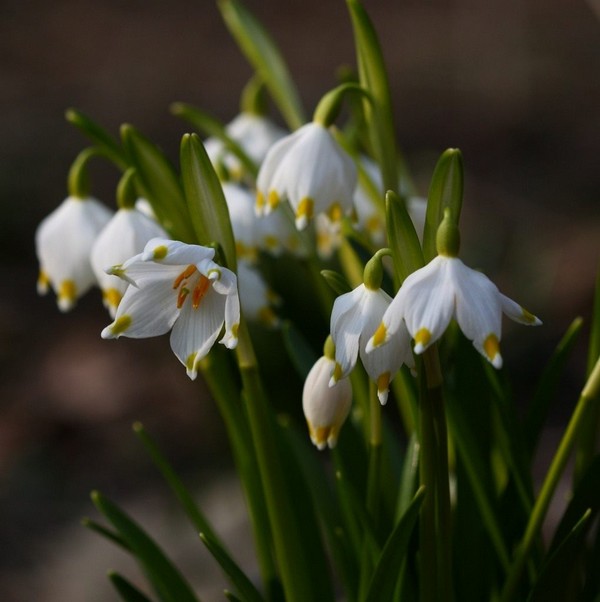
It is better to plant such a flower in partial shade.
The optimal time for buying and planting bulbs is from July to September. At this time, they are in hibernation. If the autumn is warm, then the planting period can stretch until November. In non-specialized markets, sellers often offer to purchase a flowering plant. This is very bad, because after planting, the leaves often begin to turn yellow and wither, and later they rot completely. However, the bulb itself does not die, although it loses its strength.
When purchasing sleeping bulbs, you need to make sure they are suitable for planting. Heads bulbs should be heavy and dense, with intact shells, without sprouted stems and roots. If they do exist, then this is not a big problem, but such a plant must be planted as as quickly as possible.
You can also ignore the cuts on the head of the bulb, if they are on the scales, but do not affect the bottom. But the wounds should not be fresh or moldy.
Even if the top is cut off on the bulb, but the bottom and buds are not affected, then it is considered viable. However, when buying, you should pay attention to the fact that the heads are not wrinkled or broken.
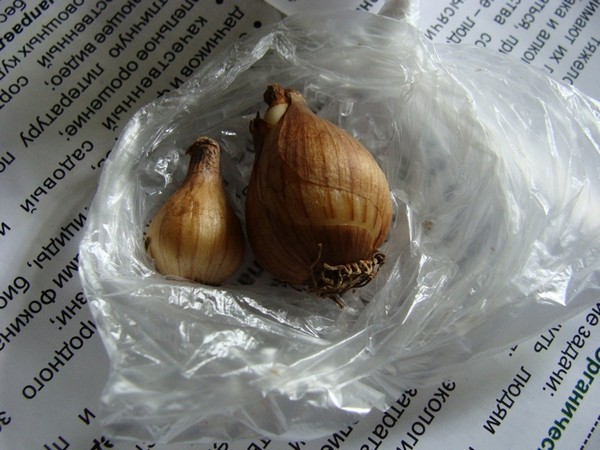
It is worth carefully choosing the bulbs of the plant when buying.
White flower bulbs do not withstand long drying. You shouldn't keep them outside for more than a month. If the time for planting is not the right time, then sprinkle them. shavings or sawdust and place in a bag with holes. In this form, they are sold or stored for 2-3 months. Planting of bulbs is carried out according to agrotechnical methods: in light soils to a depth of 2 onions, and in heavy soils - one. But it must be at least 5 cm.
Strict implementation of agricultural techniques is not so important. It is recommended due to the fact that the shallow planting of the bulbs is smaller, however, many "children" appear on them, but with a deeper bedding, the bulb becomes larger
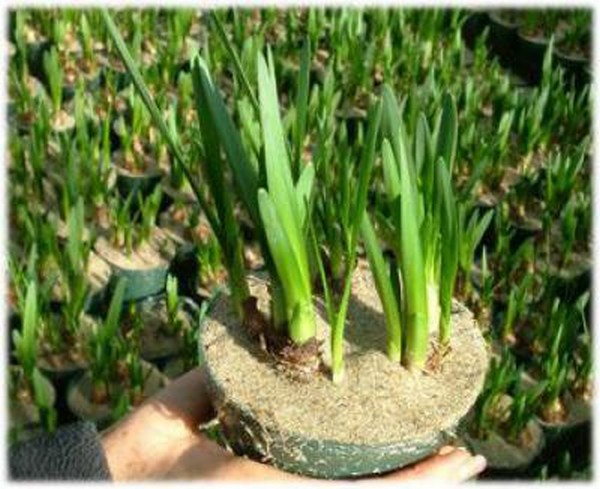
It is better to plant the bulb immediately after purchase.
The main features of growing summer white flower
It is not difficult to grow a summer white flower.He is landed on fertile loose soils (with the addition of matured compost) and fed with phosphorus-potassium fertilizers (nitrogen causes an overly active build-up of green foliage). The place should be sunny or semi-shady, with sufficient humidity, but without prolonged waterlogging. Drought inhibits and oppresses the plant, becomes one of the reasons for the appearance of "empty" peduncles.
Outdoor flowering lasts three weeks in May (until early June). In a container, the plant blooms much longer.
Summer white flower bulbs are planted, which are usually sold in summer and early autumn, in September. They are kept in a cool place until planting. Better in a perforated bag filled with dry peat or sawdust so that the bulbs do not dry out. The reliable planting time is "Indian summer". The deadline (for open ground) is mid-October. Planting in containers can continue throughout the fall.
The bulbs are large, very similar to daffodil bulbs. Closer to winter, the landing site is mulched and covered with spruce branches (or protected in another way) to avoid freezing. The fact is that the summer white-flowered plant tolerates frosts worse than some other species. In subsequent years, when the perennial settles in a new place and multiplies, there will be no problems with insulation.
It is necessary to transplant the summer white flower once every 5 - 6 years (less often more often), since by this time the overgrown "nests" bloom worse, the process of their degeneration begins. It is not worth planting the bulbs annually, since the blooming clumps look very beautiful.
The white flower is propagated by bulbs and fresh seeds. They are often carried by insects, so sometimes seedlings appear at a distance from the mother plant.
Summer white flower has peduncles up to 45 cm high, less often higher (up to 60 cm). They are surrounded by long (up to 30 cm) narrow green leaves.
How to plant?
Planting of white flowers in open ground is carried out from spring to autumn, depending on the variety of culture. To be more specific, the spring white flower is planted from March to April, the summer one is sent to the site from May to June, and the autumn one must be planted in September. Usually, not one copy is planted, but several at once - about 10 pieces. The land is necessarily loosened and provided with a high-quality drainage layer. The depth of the grooves should be approximately 5-8 centimeters, although the exact value is determined depending on the available soil. If the soil is loose, then it will be enough to bury it to a depth corresponding to the size of two bulbs, and if it is heavy, then to a depth equal to the dimensions of one bulb.
At the next stage, the planting material is covered with soil mixture. The surface of the bed is leveled and irrigated with high quality. It makes sense to mulch the trunk circle immediately with compost.
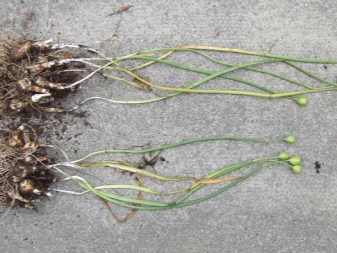

When choosing a site for growing a white flower, it is important to remember that regardless of the type and variety, he prefers partial shade. It is good if the place is located near a pond or even a bush.
The soil itself should be nutritious, moist and rich in humus, and either gravel or river sand can be used as drainage. If the site has become impoverished, then rotted manure can be added to the ground.
It is necessary to mention the peculiarities of using the bulbs, which are usually purchased in nurseries. Dense specimens should be chosen, devoid of overgrown roots or stems. It is strongly not recommended to purchase dented or slightly rotten bulbs. There should be no base or any hints of mold. They can stay in the air for no more than one month, after which the seed should be removed in a bag with sawdust.

